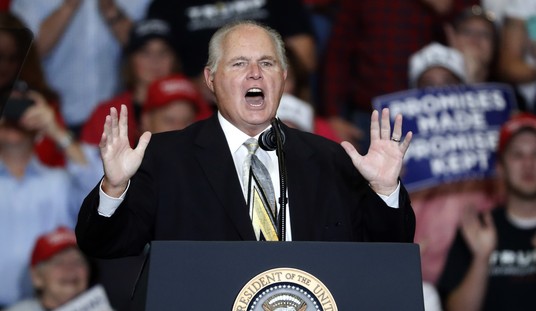Ask anyone in the car business about what it takes to turn around a car company and the answer is always Product with a capital P. That seems obvious, doesn’t it? After all, without a compelling vehicle famously offering “what the people want to buy,” a great ad campaign won’t ensure success.
On the other hand, if enough buyers won’t put a car brand on their shopping lists for any number of reasons, even brilliant product will languish in dealer showrooms. In GM’s case, the automaker has product and, more recently, political perceptions to overcome.
In the heavily import brand dominated state of California, most car buying adults are either unaware of most GM cars or they have a decade-old view of GM’s quality. It seems that no mother yells at her daughter for marrying the nice, well-educated candidate or for buying a Toyota. It’s become common folklore that the Japanese make reliable cars and the Europeans build cars that are the most fun to drive. On the other hand, many traditional GM buyers are turned off by the government’s involvement in the company.
Bob Lutz was recruited to General Motors in 2002 to revitalize the company’s product lines, and he has had some success in that challenging undertaking. Cadillac’s CTS has been a hit in a very tough part of the luxury market and the new Caddy models are just as clearly focused. Chevrolet’s Malibu won North American Car of the Year honors, the new Equinox looks like the best in its segment, and Chevy’s new Cruze could be a potential winner in the subcompact category where past efforts were lackluster. Buick’s portfolio is very competitive, with an all new LaCrosse joining the popular Enclave. And let’s not omit the Chevy Volt, the extended range electric car that GM hopes will turn around its image.
Although Lutz didn’t single-handedly reverse GM’s fortunes during his seven-year tenure, he did create an environment that honors inspired design and a determination to build products that have the quality attributes to compete with any automaker. Now he’s been reassigned to work the same magic for GM’s marketing, an area that the new chairman, Ed Whitacre, and the entire board have designated as top priority.
Most automotive product executives are engineers, so moving from car making to ad creation isn’t a normal career path. In Bob’s case, he’s a former marketing executive who happens to have a brilliant product vision and the management skill to get his visions produced. He jokes about his lack of engineering credentials as having practiced without a license. But on the marketing front, Lutz drove BMW’s successful “Ultimate Driving Machine” strategy in the mid-1970s, a campaign so successful that it’s still in use.
In most cases, a new marketing executive begins his or her assignment by firing the ad agency and bringing in old pals from another shop. Or if that’s not easily accomplished, he puts the account in review and holds an advertising gunfight among competing agencies, including the woeful incumbent.
I won’t speculate on what action Lutz will take, but I’m happy to throw in a few cents of advice as a person who has worked on both the ad agency and client side of the marketing landscape. I’ll even include some examples of breakthrough advertising that helped establish automotive brands and model nameplates, including some of the better efforts from GM.
Detroit automakers tend to stick with their agencies for decades, just as they might relate to an old, trusted supplier of air conditioning components or starter motors. And it’s possible for an ad agency to get comfortable and take fewer risks. Sometimes, stirring things up can make all the difference.
That happened in the 1990s at Chevrolet when the GM unit became impatient with its truck advertising and sales progress vs. archrival Ford. When Campbell Ewald, Chevy’s long time agency, thought it might lose the account, its creative chief persuaded Bob Seger to allow his hit “Like a Rock” to underpin a new commercial. The strategy was a major success.
Over at Cadillac, agency Leo Burnett created “Break Through,” a campaign with Burnett’s trademark “slice-of-life” storytelling with Led Zeppelin’s “Rock and Roll” providing the pounding score. The goal was to lure boomers out of their European luxury cars. It got some traction until the goal changed and Leo and the boomers were dumped for a younger, hipper demographic. Modernista, the new shop, created “Life, Liberty and the Pursuit” as a theme and employs contemporary music, but the commercials seem familiar to those that Leo Burnett had produced.
Sometimes, it takes a brand new ad agency to create not just a few commercials but a new marketing strategy. You don’t have to look further than Saturn when it began life by hiring San Francisco’s Hal Riney and Partners. This most unlikely choice, a relatively small shop across the country from Motown, proved to be brilliant. Riney’s marketing strategy created a new buyer experience and advertising that connected so well, it was superior to the product.
More recently, MINI used this strategy when the New York-based company traveled to Sausalito to pick Butler, Shine, Stern & Partners (BSSP) to handle its marketing. The small shop is so creative and thorough that even the owner’s manuals are fun to read and the commercials as entertaining as Apple’s iconic campaign.
So there you go, Bob. All you need is what every automaker spends millions to achieve but few discover: that great creative inspiration that moves metal as well as emotions. And if your current agencies can’t deliver, I’m sure you’ll know where to go to find great work.









Join the conversation as a VIP Member